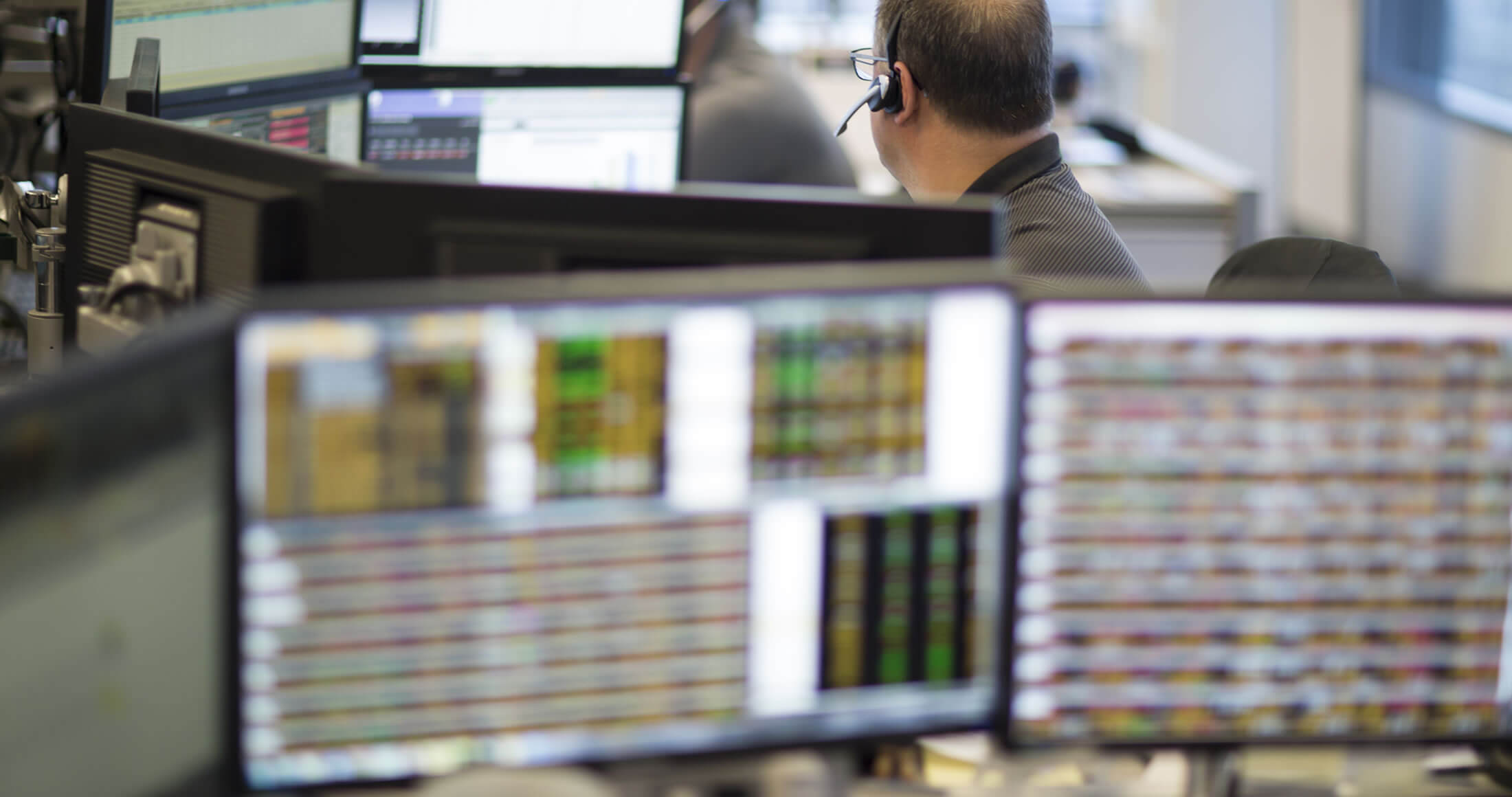
Even the most serious efforts to make predictions can end up so far from the mark as to be more dangerous than useless.
Peter Bernstein
Circa 1983, little league, the memories are still vivid. No less than twice per game, a teammate or I, sprinting toward third base and looking for my notoriously indecisive coach’s instruction on what to do next. The common guidance: “Go, go, go! No, come back, come back! No, go, go.” The usual result—a flustered fourth grader standing squarely between third base and home plate, an easy out and an even easier target for razzing the next day at school.
Over the last five weeks or so we have been met with similarly discordant headlines:
- “U.S. Stocks Pull Back Sharply On Omicron Concerns”
- “Stocks slide amid Omicron concerns”
- “European Stocks Weaken as Omicron Concerns Mount”
Then, not more than a few days later in some instances:
- “European stock markets rise as traders shrug off Omicron …”
- “Easing Omicron Concerns Contribute To Rally On Wall Street”
- “Risk appetite has improved after recovering from the Omicron worries”
And by the time you read this, this cycle may have repeated itself another time or two.
There is no doubt that the last two years have left all of us with some wounds. It’s unsettling that Covid-19 is as prevalent in our lives now as it was last year. However, with what we have learned about the virus, it should not be a surprise for the markets when a new variant introduces itself. Thankfully, the deeper we get into the Greek alphabet, the less severe these strains seem to be and the more capable our system is of handling those infected. But what is an investor to do with such conflicting headlines in short and rapid succession? My little league coach’s tact would seem ill-advised: “Buy, buy, buy…no, sell, sell, sell… no, buy…” Our job as portfolio managers is to remain unemotional and objective and sift through the noise to determine if any of it affects the long-term value of the companies in which we are invested and to take advantage of opportunities that may avail themselves from panic selling. Famous financial personality, the late Louis Rukeyser, once said in times of great stress, “Don’t just do something, stand there.” If it were possible to have insulated oneself from any kind of financial news since the Omicron variant was revealed, most investors would have likely experienced lower blood pressure and higher portfolio values. Under certain circumstances, staying the course and doing nothing may just be the most profitable decision one can make.
Of course, there are other concerns beyond Covid-19. Gridlock in Congress and continued supply chain constraints are just a few challenges. Furthermore, Fed Chairman Jerome Powell has admitted that perhaps inflation is more formidable than initially thought and not as transitory as he had previously believed. However, nearly 70% of our economy is driven by the consumer, and by all accounts, that cohort looks to be quite healthy overall. Some economists estimate the unemployment rate may be as low as 3.5% over the next year1; demand for hourly workers has improved, which has led to higher wages and savings rates for that group; and the two-thirds of Americans who own their home have seen those values rise at a staggering rate. This unprecedented surge in consumer wealth led to holiday sales that grew at their swiftest pace in 17 years.2 This is a positive for the economy. We are experiencing a supply problem, not demand. While irritating, it is demand problems that have led to recessions.
The reasons for elevated inflation are multi-faceted. In many instances, unexpected disasters are at least partially to blame. Wildfires in the Pacific Northwest led to an increase in timber prices. The worst freeze Brazil has experienced in 25 years devastated Arabica bean crops, which led to an increase in coffee prices. And more expensive baked goods may be the result of a plague of grasshoppers that wiped out 1.2 million acres of wheat in North Dakota. All this being said, the S&P 500 was up nearly 30% last year while inflation is hovering around or slightly above 5% for the time being. Equity holders not only hedged against inflation this past year, they drubbed it! Dating back to 1926, domestic equities have compounded at three times the rate of the Consumer Price Index.3 This has increased investors’ purchasing power well above what inflation has clawed back or what they would have earned by owning gold, for example, which has secured the reputation of being a consistent inflation hedge, despite a lack of any supporting evidence.
Every December, financial “experts” are polled as to where they believe the markets will be one year hence. In one such survey, the median forecast has missed by nearly 13% each year over the past 20 years. And for 2021, the S&P 500 finished 25% higher than their projection of 3,800.4 We are not surprised that their predictions are so inaccurate… it’s an impossible task. The curious part is that given their dreadful track record, their opinions are still sought! Perhaps economist John Kenneth Galbraith has the best explanation: “Pundits forecast not because they know, but because they are asked.”
So, to our clients who are often underwhelmed by our response when asked what we see for the year ahead in the market, hopefully this explains our hesitancy. We will not attempt to implement investment strategy in contemplation of phenomena we can’t begin to time or predict, much less quantify. The upside, though, is that this in no way impedes our ability to generate long-term wealth. Equity returns have been positive in 70 of the past 95 years. We can’t offer our clients certainty of returns from year to year, but we can offer overwhelming historical probability that they will make money over longer periods. This is where our focus has always been, investing in individual companies that we believe to have plenty of good news in the years ahead but that is not yet reflected in their stock prices.
The Federal Reserve is anticipated to further taper its bond buying program and raise interest rates three times in 2022. This, of course, raises questions for how equity returns may be impacted. History suggests that stocks peak when corporate earnings peak and toward the end of Fed tightening, not the beginning. From 1994 to 2000, for example, Fed funds were hiked from 3.00% to 6.50%. During that period, the S&P 500 more than tripled and earnings more than doubled. Expectations for corporate earnings over the next 12 months look encouraging. And given the very low yield on bonds coupled with the lingering valuation disparity between value stocks and their growth counterparts, we feel there are still compelling opportunities for our style of investing.
There’s a Wall Street adage that goes something like: “One can predict the end of the world as many times as they want, but they can only be right once, and then they don’t even get to brag about it.” In our era of real time stock quotes and a never-ending news cycle, where many people mistakenly believe that more information equates to more knowledge, pessimists will always have ammunition for why the backdrop for equities is unfavorable—a viewpoint that most assuredly has destroyed more wealth over time than it has created. Market volatility and uncertainty are not a problem with investing, they’re a feature. They provide opportunity to those with discipline and patience. We assure you that we will continue to exercise these traits through the always dynamic market cycle. And at the risk of this at all resembling a prediction, there are plenty of indications that 2022 can be another fine year for the economy and stocks. However, expectations should be more muted than the surprising (and welcomed) gains we experienced in 2021.
As always, we thank you for entrusting us with your investment assets and your continued support. Lastly, the best compliment we can receive is a referral from a satisfied client. We appreciate your referrals and handle them with the utmost care.
As a postscript, here are a few events from the past year that we can hopefully all celebrate:
- China eliminated malaria.
- Governments, corporations, and philanthropists pledged $40 billion of investments in gender equality initiatives at the Generation Equality Forum.
- The Oscars had their most diverse year ever: including the first Asian American ever nominated for best actor, the first woman of color to win best director, and first Korean actor to win an Oscar.
- A thought-to-be-extinct orchid was found growing on a London rooftop.
- Scientists revealed that cheese isn’t bad for you (really!).
We wish you a happy, healthy, and prosperous 2022!
1https://www.cnn.com/2021/11/15/economy/unemployment-rate-goldman-sachs/index.html
2https://theweek.com/spending/1008419/us-holiday-spending-rose-at-fastest-pace-in-17-years-despite-delta-and-omicron
3Domestic equities refers to the S&P 500 from most recent Ibbottson data
4https://www.nytimes.com/2021/12/03/business/omicron-stock-market-forecasts.html
The S&P 500 Total Return Index is a float-adjusted, capitalization-weighted index of 500 U.S. large-capitalization stocks representing all major industries. It is a widely recognized index of broad, U.S. equity market performance. Returns reflect the reinvestment of dividends. This index is unmanaged and investors cannot invest directly in this index.
Past performance is no guarantee of future results. Current performance may be lower or higher than the performance data quoted. The gross performance presented does not reflect the deduction of investment advisory fees. All returns reflect the reinvestment of dividends and capital gains and the deduction of transaction costs. The client’s return will be reduced by the advisory fees and other expenses it may incur in the management of its account. The advisory fee, compounded over a period of years, will have an adverse effect on the value of the client’s portfolio.
Certain comments herein are based on current expectations and are considered “forward-looking statements”. These forward looking statements reflect assumptions and analyses made by the portfolio managers and Harris Associates L.P. based on their experience and perception of historical trends, current conditions, expected future developments, and other factors they believe are relevant. Actual future results are subject to a number of investment and other risks and may prove to be different from expectations. Readers are cautioned not to place undue reliance on the forward-looking statements.
The information, data, analyses, and opinions presented herein (including current investment themes, the portfolio managers’ research and investment process, and portfolio characteristics) are for informational purposes only and represent the investments and views of the portfolio managers and Harris Associates L.P. as of the date written and are subject to change without notice. This content is not a recommendation of or an offer to buy or sell a security and is not warranted to be correct, complete or accurate.
Investing in value stocks presents the risk that value stocks may fall out of favor with investors and underperform growth stocks during given periods.







